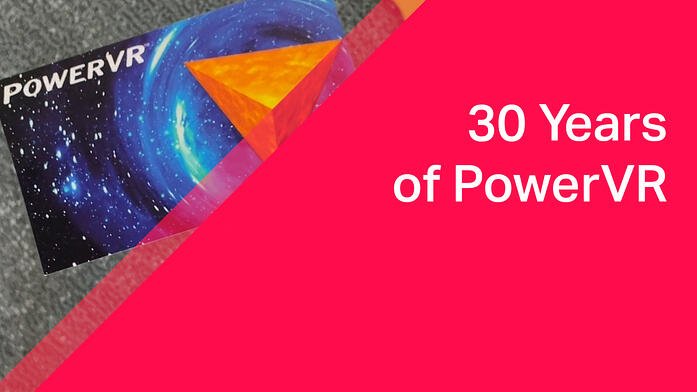[ad_1]
Celebrating three decades of market-leading graphical innovation
London, England – August 30, 2022 – Imagination Technologies celebrates the 30th anniversary of its revolutionary PowerVR GPU architecture.
Initiated in 1992, the PowerVR project was part of a wave of products that enabled consumer 3D graphics for PCs. PowerVR was unique in introducing a brand-new rendering method: tile-based deferred rendering (TBDR) technology, which made better use of system memory and dramatically increased overall efficiency by rendering only visible pixels while discarding covered or occluded ones.
PowerVR has a rich history in graphics, being originally intended for arcade systems in the mid-90s, and shortly afterwards shipping to PC OEMs under the VideoLogic brand. It was notable for powering Sega’s famous Dreamcast console, which shipped over 10 million units worldwide, and a generation of classic arcade games running on Sega’s Naomi and Naomi II systems.
Royal O’Brien, General Manager of Digital Media and Games, says: “Mobile is a huge market for games, with an audience always demanding innovation. Imagination Technologies, O3DF Partners, and the open-source community are focused on helping standardise the APIs and optimise performance on mobile GPUs. Imagination is dedicated to helping developers leverage exceptional graphics performance around their PowerVR-based chips. With mobile gamer numbers reaching billions, this opens the opportunity for developers to remove creative limitations and develop some of the most ground-breaking gaming experiences on mobile devices.”
Tatsuya Kamei, Distinguished Engineer, Automotive SoC Business Division, Renesas says: “Congratulations to Imagination for 30 years of excellence in innovative 3D graphics technology. PowerVR forms the foundation of our decades-long collaboration. With the accelerated growth of the electric vehicle market, we recognise the importance of balancing performance with energy consumption. The PowerVR architecture is ideal for our customers since it delivers both power efficiency and advanced graphics performance.”
Dr Jon Peddie, President and Founder, Jon Peddie Research, says: “Imagination’s PowerVR has had a true and lasting impact in revolutionising computer graphics, thanks to its tile-based deferred rendering technology. The architecture has led 3D graphics innovation, including its PowerVR Photon ray tracing technology and AI acceleration. PowerVR has proven its scalability and has been applied from low-power mobile devices to data-centre applications. Congratulations on 30 years of success!”
Today the PowerVR architecture represents the building block for Imagination’s extensive GPU range, including both the IMG A-, IMG B- and IMG C-Series cores. Most recently, Imagination launched its PowerVR Photon architecture with the IMG CXT GPU – the most advanced ray tracing architecture in the world, enabling desktop-level ray tracing for mobile.
Simon Fenney, Research Fellow in PowerVR, Imagination, says: “Three decades ago we set on an important path to change the way we process graphics. PowerVR was a trailblazing architecture that allowed us to deliver great efficiency and performance wins, with an impact that echoes through the market today, with billions of devices and vehicles powered by our technology. Since creating the original, the same curiosity and drive have allowed us to push the graphical envelope even further with a first-of-its-kind mobile ray tracing on the PowerVR Photon architecture. We are excited to see where the next 30 years will take us.”
In addition to its GPU family, Imagination also offers an extensive range of AI accelerators, Ethernet and CPU cores, that are designed to support the market shift towards heterogeneous SoC implementations. Its award-winning PowerVR AI technology enables mobile, automotive and AIoT devices to run neural networks at outstanding speeds while its recently announced Catapult CPU family expands the RISC-V ecosystem and is designed for implementation across a variety of market applications. Find out more about PowerVR’s history and recent achievements.
[ad_2]
Source link
